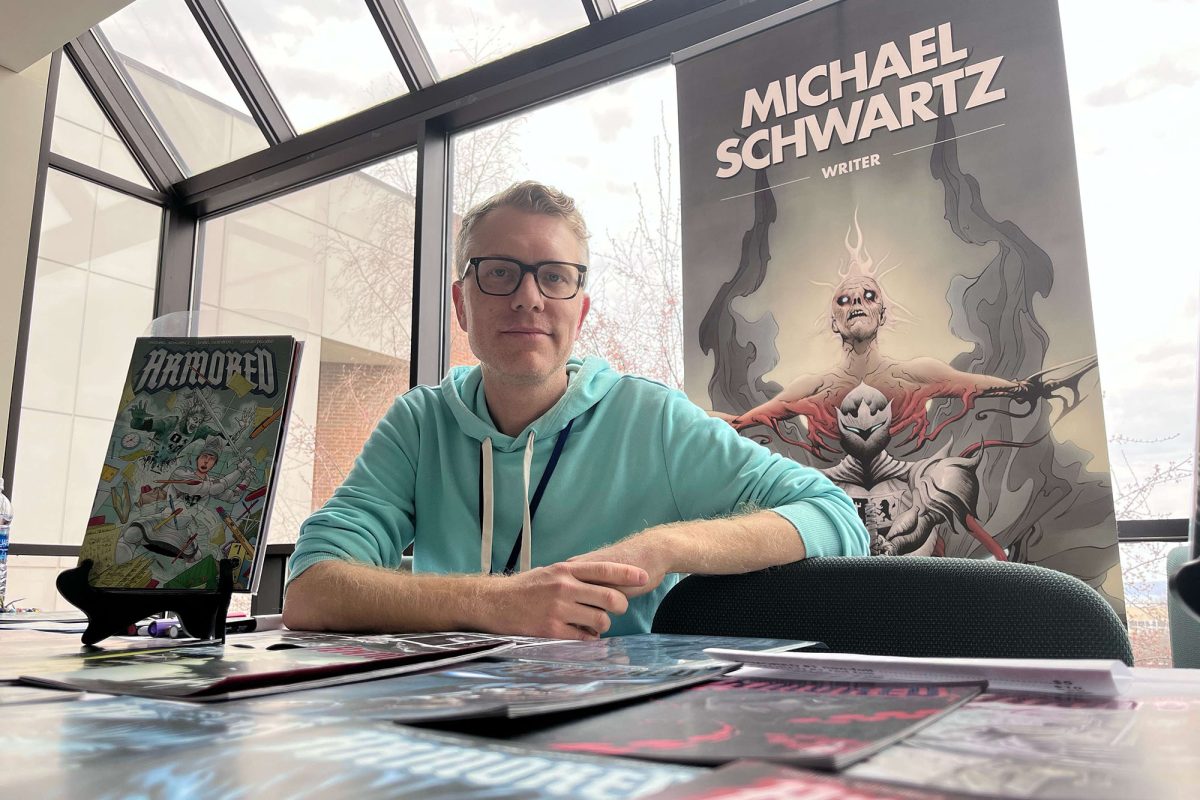The room had transformed into a child’s dream — board games and puzzles at tables, wooden blocks and railroad connectors on the ground, and the sound of an electric model train racing through a paper town.
It was Game Day at The History Center in Tompkins County, the first to mark the opening of the new exhibit, called Come Play With Us — Early Toys from the Collection, an interactive exhibit showcasing popular toys and games throughout history, a few of them specific to Ithaca. The Game Days occur on the second Saturday of each month during the time the exhibit is open, which ranges from April 1 through Aug. 20. Balloons mark the spots where kids can sit down and play with the artifacts and modern games, and balloons are everywhere.
“We want the gallery to be inviting for people to just come and actually play with things in this environment that celebrates toys and play,” archivist Donna Eschenbrenner said.
One of those Ithaca specific games includes a board game similar to Monopoly. Eschenbrenner said this game is not made anymore.
“It’s sort of built on a Monopoly premise, but it’s about Ithaca so instead of, you know, Boardwalk and Park Place, you have things like little Ithaca restaurants and Ithaca places, and it’s all about the city of Ithaca,” Eschenbrenner said.
Puzzles are also included in this exhibit, including one of New York State. Made in 1855, Eschenbrenner said, the puzzle pieces represent the state’s counties and has educational value for the kids.
“It teaches kids ‘okay this is what your state looks like,’ it teaches kids all about New York State,” she said.
When a local teacher from Boynton Middle school heard about the exhibit, he offered Eschenbrenner dioramas his sixth grade students made on the history of toy cars made in the 1930s, 40s and 50s, called dinky cars.
“The teacher assigned them a project to use this car, create a diorama highlighting the year in which the car was made and tell five facts about that year,” she said. “So it’s a fabulous broad display of what history looks like to kids with toys.”
Eschenbrenner says the highlight of the exhibit — and the loudest artifact there — is the modular layout of a Lionel electric train. Gene Endres, a volunteer at the Cornell Railroad Historical Society who brought the layout to the exhibit, said these trains were made by a company owned by Joshua Lionel In the 1930s through 50s.
However, he said this particular layout, running on electricity but man-operated, is larger and more kid-friendly than typical ones. Kids and adults alike are able to view and interact with this modular layout when they visit the exhibit.
Endres has had a fascination with trains from his early childhood, when it was popular to associate model trains with Christmastime.
“You ran it. You were in control of this device that you operated from a distance,” he said.
Endres’ fascination in early trains led to interests in other subjects like writing and history, and he said it has the chance to do that for other children visiting the exhibit as well.
“Any fascination can be an entree into all kinds of different worlds,” Endres said.
Though the main focus of this exhibit revolves around the toys and games in the room, the photos on the wall make a huge contribution to this experience as well.
The photos featured on the walls of this exhibit were taken by Sol Goldberg, who was an Ithaca Journal photographer. Most of the pictures featured are from the 1960s, featuring people during leisure and at play, mostly at spontaneous moments.
“He was a real true photojournalist, his idea was to capture moments in time, to let pictures tell their own stories,” she said. “Because this is all about toys and play, we tried to pick Sol Goldberg’s images that were the most playful, the most whimsical, the things that highlighted fun moments in time.”
When leaving the exhibit, Eschenbrenner wants kids to walk away with a sense of connection to the people who have come before them, and she said the toys and the play involved can help do that.
“One of the things that we wanted to highlight is the difference between play say 100 years ago and play now. I think it’s important for kids to learn that, you know, toys change and toys really don’t,” she said. “I want kids to see that what they do is very much in line with what their parents did, their grandparents did, they’re great grandparents. Kids are kids, even all of us who are older kids and in our hearts.”


















